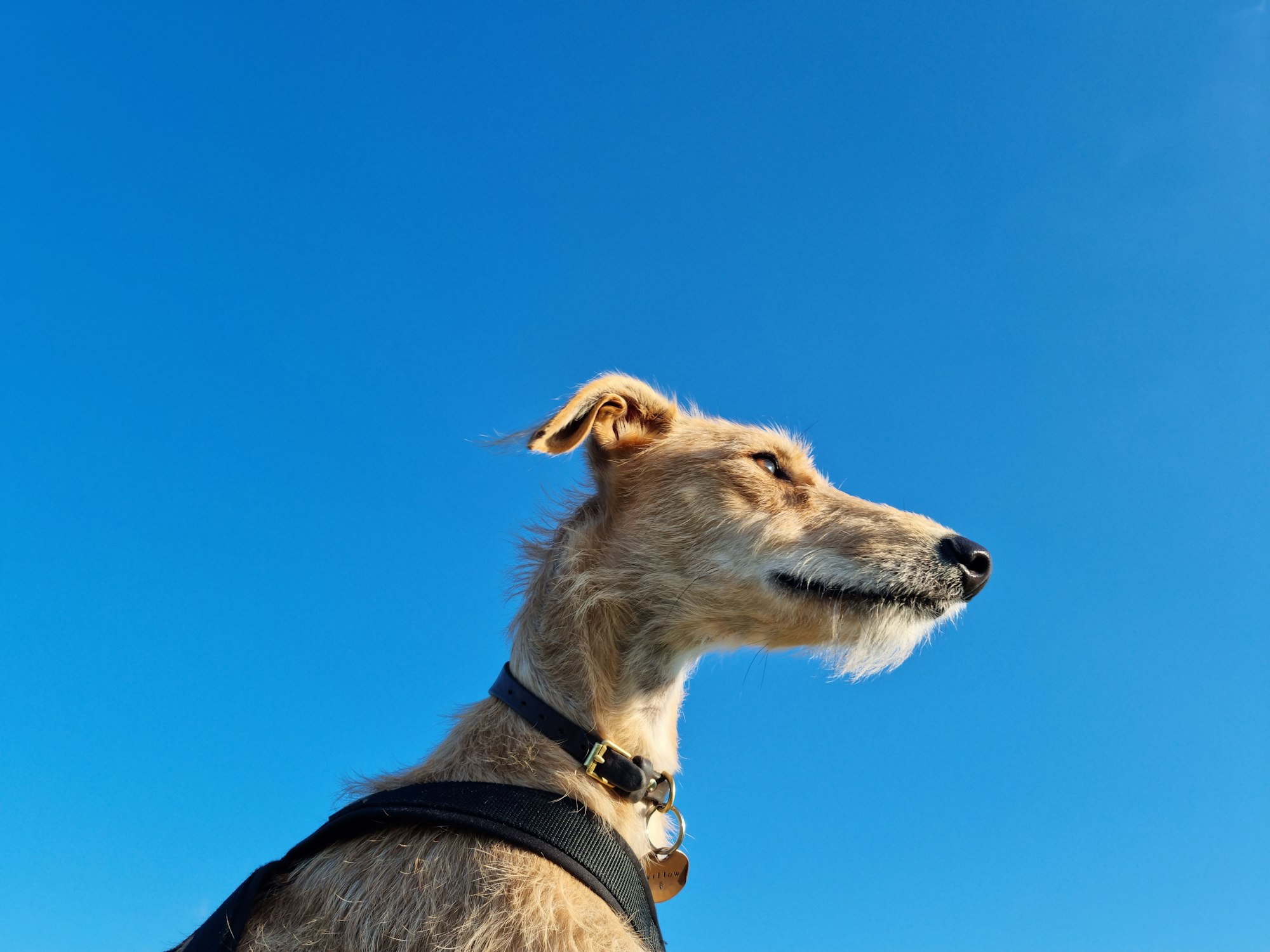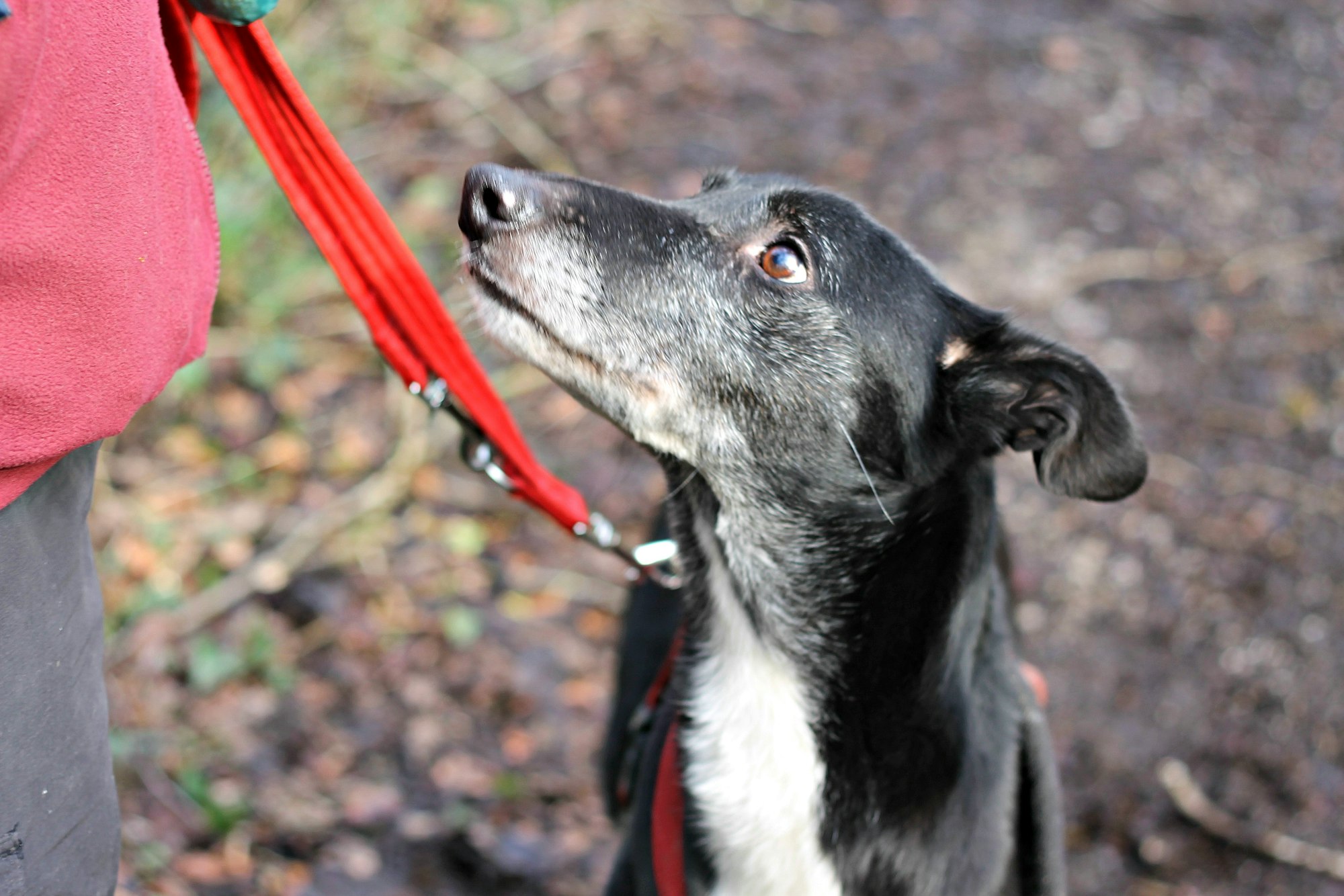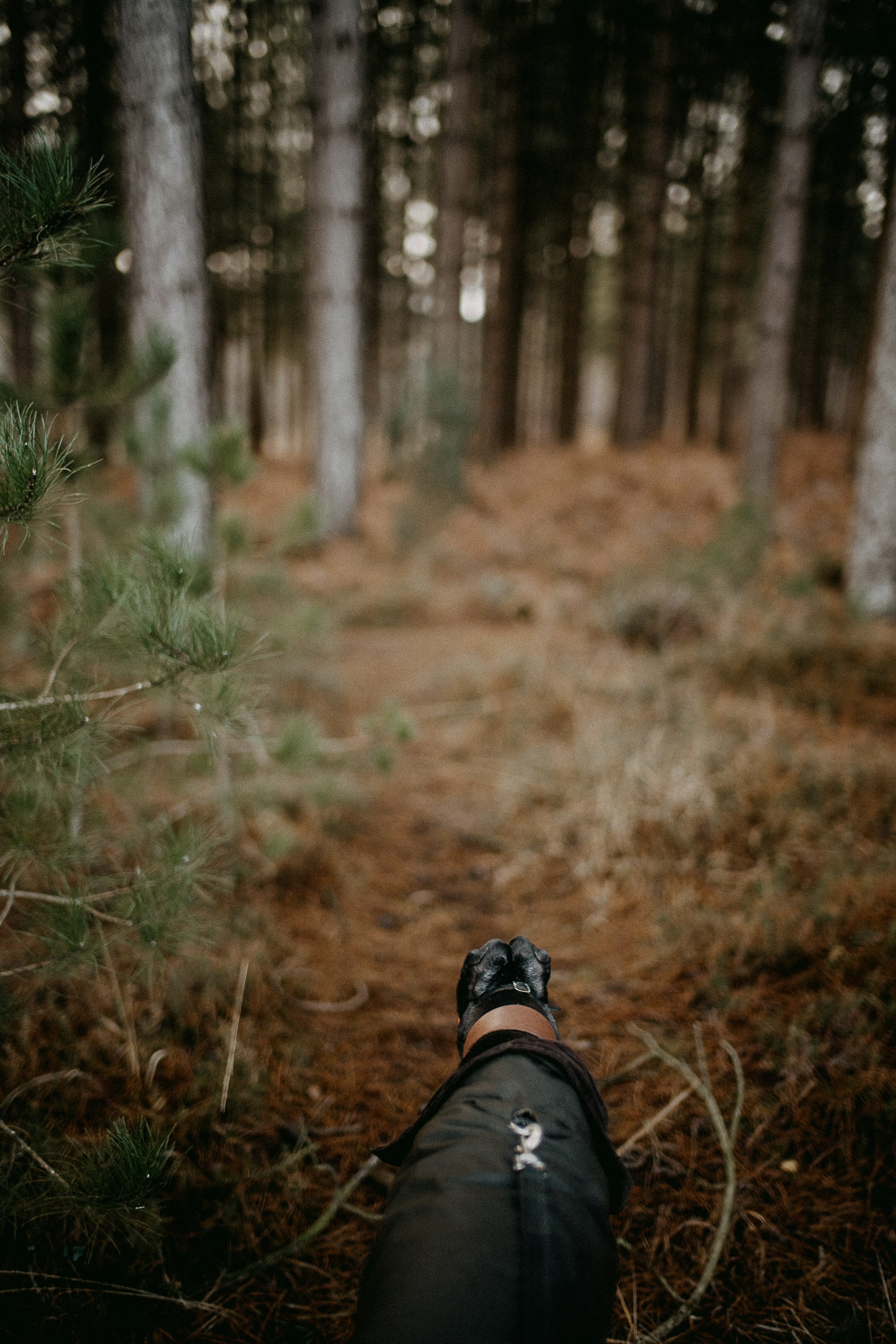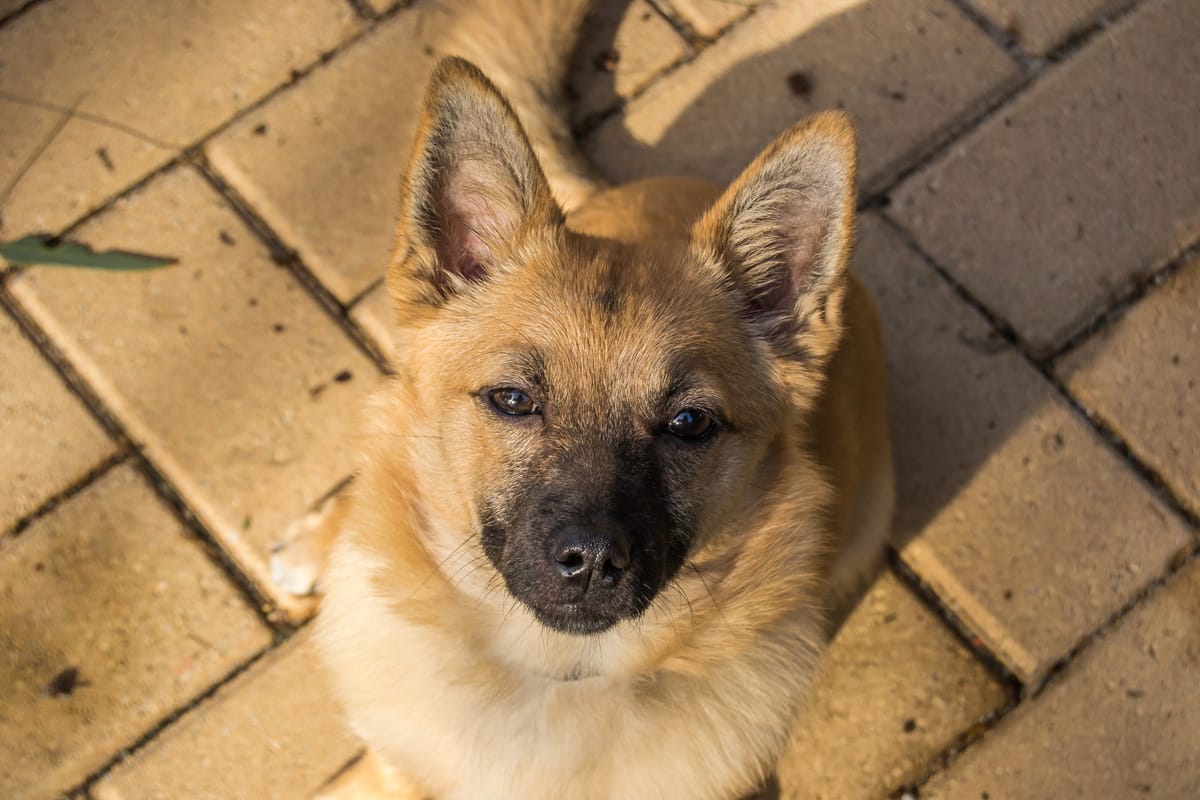The Lurcher is a unique and fascinating dog breed that has been gaining popularity in recent years. With their sleek and athletic build, Lurchers are known for their impressive speed and agility.
But what are they? Well, the Lurchers are a crossbreed between a sighthound (usually a Greyhound) and another breed, such as a Terrier, a Collie, or a Shepherd. This crossbreeding results in a dog that combines the speed and agility of a sighthound with the intelligence and loyalty of another breed.
Why don’t we take a closer look at this fascinating breed, exploring their characteristics, history, and what makes them such great companions?
What Is a Lurcher?
Lurchers are a unique crossbreed that can vary widely in size, appearance, and temperament, depending on the breeds used in their breeding. They typically have a lean and athletic build, with long, muscular legs and a deep chest. Lurchers come in a wide range of colors, from solid black or white to brindle or spotted. They have a short, smooth coat that requires minimal grooming.
As a hybrid breed, Lurchers can inherit a range of different traits from their parent breeds. For example, Lurchers that are crossed with Terriers may have a more independent and stubborn personality, while those crossed with Shepherds may be more protective and loyal. It is important for potential owners to research the breeds used in a particular Lurcher's breeding to get a better sense of their temperament and exercise needs.

Fascinating Lurcher Breed Characteristics
Lurchers are highly athletic dogs that require regular exercise and stimulation to keep them happy and healthy. They are intelligent and trainable, making them a good choice for experienced dog owners who are willing to put in the time and effort to train them properly. Lurchers are also known for their loyalty and affection towards their owners, making them great family pets.
Despite their hunting heritage, Lurchers are typically gentle and even-tempered dogs that get along well with children and other pets. They are highly adaptable and can thrive in a variety of living situations, from apartments to rural farms. However, they do require regular exercise and mental stimulation to prevent boredom and destructive behavior.
What Type of Dog Is a Lurcher?
Lurchers are a unique and versatile breed that have been bred for their speed and hunting abilities. They are often used for hunting small game, such as rabbits and hares, but also make great companions for active families. Lurchers are highly adaptable and can thrive in a variety of living situations, from apartments to rural farms.
Due to their sighthound heritage, Lurchers have an incredible sense of sight and can see up to half a mile away. This makes them excellent at spotting and chasing prey, but can also make them prone to chasing after anything that moves, including other animals and cars. It is important for owners to provide their Lurchers with plenty of exercise and mental stimulation to prevent them from becoming bored and engaging in destructive behavior. Lurchers may enjoy lure coursing or even using and playing with a flirt pole.
The History of the Lurcher
The history of the Lurcher is shrouded in mystery, but it is believed that they originated in Ireland and Scotland in the 1600s. Lurchers were originally bred as hunting dogs, often used by poachers to hunt game on estates. Over time, Lurchers became popular with farmers and shepherds, who valued their speed and agility for catching vermin and other small prey.
In the 19th century, Lurchers became popular with the working classes, who used them for poaching and hare coursing. Despite being outlawed in many parts of the UK, these blood sports remained popular well into the 20th century. Today, Lurchers are still used for hunting and racing in some parts of the world, but are more commonly kept as pets and companions.
As a crossbreed, Lurchers have been bred for specific purposes, such as hunting or racing, rather than for a specific appearance or temperament. This has resulted in a wide range of Lurcher types, each with their own unique traits and characteristics. For example, Saluki Lurchers, which are crossed with Salukis, are known for their speed and endurance, while Bedlington Lurchers, which are crossed with Bedlington Terriers, are known for their gentle temperament and curly coat.
Despite their varied backgrounds, all Lurchers share a common ancestry in the Greyhound. Greyhounds were originally bred in ancient Egypt as hunting dogs, and were later brought to Europe by the Romans. By the 16th century, Greyhounds had become popular with the aristocracy for hunting game, and were often bred with other breeds to create new hunting dogs.

Lurcher Temperament and Personality
Lurchers are crossbred dogs that typically exhibit a combination of characteristics inherited from their sighthound and other breed parentage. Due to their varied backgrounds, Lurchers have unique temperaments and personalities. However, they are generally known for being friendly, loyal, and intelligent dogs. They are highly adaptable and can thrive in a variety of living situations, from apartments to rural farms.
Lurchers are known for their affectionate nature and form strong bonds with their owners. They are often described as being "velcro dogs," following their owners from room to room (including the bathroom!) and seeking out physical contact. While they are known for their loyalty, Lurchers can be independent thinkers and may require consistent training to prevent them from developing bad habits.
Due to their sight hound heritage, Lurchers have a strong prey drive and may chase after small animals or other moving objects. This can make them a challenge to walk off-leash in unfenced areas. It is important for owners to provide their Lurchers with plenty of exercise and mental stimulation to prevent them from becoming bored and engaging in destructive behavior.
Owning a sighthound comes with the responsibility of ensuring their safety, particularly when it comes to chasing prey. These dogs have a strong hunting instinct and can quickly take off after anything that catches their attention, making it difficult for their owners to keep up. That's why owning a GPS collar such as the Fi collar is essential.
This high-tech collar is designed to track your dog's location in real-time, allowing you to locate them quickly if they become lost or go off on a chase. With a Fi GPS collar, you can rest easy knowing that your sighthound is safe and can be easily located, even if they decide to take off after prey.
Understanding Lurcher Health: What You Need to Know
Lurchers are generally a healthy breed, with a lifespan of 12-14 years. However, like all dogs, they can be prone to certain health issues. Some of the most common health issues that Lurchers may face include hip dysplasia, eye problems, and heart disease.
Hip dysplasia is a common genetic condition in Lurchers, as well as other large dog breeds. This condition occurs when the hip joint does not form correctly, causing pain and difficulty with movement. Regular vet checkups can help detect hip dysplasia early, and proper nutrition and exercise can help manage the condition.
Eye problems are also common in Lurchers, particularly those with sighthound heritage. Lurchers may be at risk for conditions such as progressive retinal atrophy (PRA) and cataracts. Regular eye exams can help detect these conditions early, and some can be managed with medication or surgery.
Lurchers may also be at risk for certain types of cancer, such as osteosarcoma, due to their sighthound heritage. Early detection and treatment can improve the prognosis for dogs with cancer.
Overall, regular vet checkups, proper nutrition and exercise, and early detection and treatment of health issues can help keep Lurchers healthy and happy.
The Art of Lurcher Grooming: A Basic Guide
Lurchers have a short, smooth coat that requires minimal grooming. However, regular grooming can help keep their coat shiny and healthy, and also provide an opportunity for owners to bond with their dogs.
Lurchers shed moderately year-round and may require weekly brushing to remove loose fur and prevent matting. A rubber curry brush or grooming mitt can be effective for removing loose fur and distributing natural oils in the coat. A slicker brush can be used for more thorough brushing, but be careful not to brush too hard and cause discomfort to the dog's skin.
Bathing should be done as needed, usually every 2-3 months, to keep their coat clean and fresh. Use a mild dog shampoo and conditioner and rinse thoroughly to avoid skin irritation. Be sure to avoid getting water in the dog's ears and use a towel or blow dryer on low heat to dry the coat thoroughly.
Lurchers also need their nails trimmed regularly to prevent them from becoming too long and causing discomfort. A nail clipper or grinder can be used, but be careful not to cut the quick, which can cause bleeding and pain.
It is also important to clean their ears and brush their teeth regularly to prevent infections and dental issues. Use a cotton ball or soft cloth dampened with a gentle ear cleaner to wipe the inside of the ear flap and ear canal. Be careful not to insert anything into the ear canal, as this can cause damage or injury.
Brushing your Lurcher's teeth regularly can help prevent dental issues such as tartar buildup and gum disease. Use a soft-bristled toothbrush and a dog-friendly toothpaste, available at most pet stores. Be sure to start slowly and gently when introducing tooth brushing to your Lurcher, and use plenty of positive reinforcement to make the experience enjoyable for them
Regular grooming can help keep your Lurcher looking and feeling their best, and can also provide a valuable opportunity for bonding and positive interaction between you and your dog.

Is a Lurcher a Good Family Dog?
Lurchers can make great family dogs, but their suitability will depend on a number of factors, including their temperament, exercise needs, and prey drive. Lurchers are generally friendly and affectionate dogs that form strong bonds with their owners, making them great companions for families. However, due to their sighthound heritage, Lurchers may have a strong prey drive and may not be suitable for households with small pets.
Lurchers require regular exercise and mental stimulation to keep them happy and healthy. They are highly adaptable and can thrive in a variety of living situations, from apartments to rural farms. However, they do require plenty of space to run and play, and may become bored and destructive if not given enough exercise and stimulation.
If you are considering getting a Lurcher as a family pet, it is important to research their temperament and exercise needs, and to provide them with proper training and socialization. With the right care and attention, Lurchers can make loving and loyal family pets.
How Fast Can a Lurcher Run?
Lurchers are known for their impressive speed and agility, thanks to their sighthound heritage. The exact speed of a Lurcher will depend on their breeding and individual traits, but they can typically run at speeds of up to 45 miles per hour. This makes them one of the fastest dog breeds in the world.
Lurchers are often used for hunting and racing, and are particularly adept at chasing down small prey such as rabbits and hares. While their speed and agility can be impressive, it is important to keep in mind that Lurchers require regular exercise and mental stimulation to keep them happy and healthy.
Our Final Thoughts on the Lurcher
Lurchers are a unique and fascinating breed that have a long and storied history. They are highly adaptable dogs that can thrive in a variety of living situations, and make great companions for active families. With their impressive speed and athleticism, Lurchers are often used for hunting and racing, but also make loving and loyal pets
Want to know learn more about rare dog breeds?












